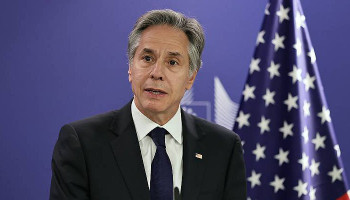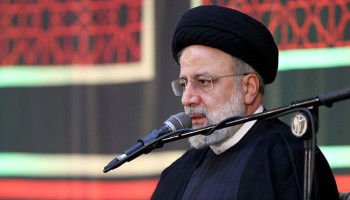After Russia’s Retaliation, Embassy Workers Brace for a ‘Shock to the System’
 The last time the Kremlin forced a sweeping reduction of local staff at the American Embassy in Moscow, a young diplomat named Steven Pifer found himself working four days a week on arms control, as usual. But on the fifth day, he navigated the capital in a big truck to move furniture or haul mammoth grocery loads. The entire staff of the embassy, except the ambassador, was assigned one day each week to grunt work called All Purpose Duty, Mr. Pifer recalled in an interview on Monday, when they shed their dark suits and polished loafers to mow the lawns, fix the plumbing, cook in the cafeteria and even clean the toilets. That was a last hurrah for the Cold War in 1986, and although the embassy now functions on a far more complex scale, many current and former diplomats expect a similar effort in the wake of President Vladimir V. Putin’s announcement on Sunday that the United States diplomatic mission in Russia must shed 755 employees by Sept. 1. “The attitude in the embassy was if they think that they will shut us down, we will show them,” said Mr. Pifer, who went on to become an American ambassador to Ukraine and is now a senior fellow at the Brookings Institution in Washington. “I think the embassy will adapt this time, too.” Russia demanded that the United States reduce its diplomatic staff to equal the 455 Russian diplomats working in the United States, including at the mission to the United Nations. That means cutting about 60 percent of a work force estimated at 1,200 to 1,300 people, the vast majority of whom are Russians. Continue reading the main story
NEWS ANALYSIS Russia Seizes 2 U.S. Properties and Orders Embassy to Cut Staff JULY 28, 2017 House Approves Sweeping Sanctions Package Against Russia JULY 25, 2017 NEWS ANALYSIS Christine McM 1 hour ago Given the continuing deterioration in relations between the two countries, core functions like political and military analysis will be preserved, along with espionage, experts said, while programs that involve cooperation on everything from trade to culture to science are likely to be reduced or eliminated. Besides the State Department, a dizzying array of American government agencies have employees at the embassy, including the Departments of Agriculture and Commerce as well as NASA and the Library of Congress. The other area expected to take a heavy hit will be public services, like issuing visas to Russian travelers to the United States, which is likely to slow to a glacial pace. The Russian staff can be broken down into two broad categories: specialists who help individual departments in the embassy like public relations, and basic service workers employed as security guards, drivers, janitors, electricians and a host of other maintenance functions. As of 2013, the latest year for which public records are available, there were 1,279 staff members working in the American Embassy in Moscow and in consulates in St. Petersburg, Yekaterinburg and Vladivostok, according to a report by the Inspector General’s Office. Of those, 934 were not Americans, including 652 basic service workers. The numbers are believed to have stayed roughly the same. Russian staff members working in various departments like the political or economic section often provide the embassy’s institutional memory, because they stay on the job for years while American diplomats rotate every two or three years. (If the Russian employees stay for at least 15 years, they are eligible for special immigration visas to the United States and their salaries are high by Russian standards.) It is the Russians who tend to notice nuances in domestic news coverage or in Mr. Putin’s speeches, or who direct diplomats toward public events or responsible journalists. The Russian employees provide continuity, an American diplomat who recently left Moscow said, speaking anonymously because he was not authorized to speak publicly. Gen. Bruce McClintock, the American Defense attaché from 2014 to 2016 and now a RAND Corporation analyst, said Russian employees were often more effective in organizing meetings with government officials, while experienced translators ensured that the positions of both sides were clear in often complex discussions. Russia had already chipped away at embassy programs, anyway, he noted. In 2013, it shuttered USAID, for example, and in 2014, in response to the West’s cutting off military cooperation after the Ukraine crisis, it closed the Defense Threat Reduction Agency. Although the work continued, it was much harder to coordinate because its 10 employees had departed, said General McClintock.Russian nationals are not given the security clearances needed to work in the more clandestine branches of the embassy. Indeed, in the chancellery itself, no Russians worked above the fourth floor in the roughly 10-story building, former Russian employees said. The American Embassy, which held a staff meeting on Monday to confirm the news to its employees, refused to comment on the events, while in Washington the State Department would say only that it was studying the Russian government’s request. The general hostility toward the United States means Moscow was already considered a hardship post for American diplomats, and the new measures will lower morale further, diplomats said.Russian employees are confused and do not yet understand how the changes will be carried out, a former Russian employee now working outside the country said, adding with dark humor that Stalin used to say there were no irreplaceable people. Russian employees who worked for specialized departments feel especially vulnerable because they carry a certain stigma in Russia’s current nationalistic mood. Michael McFaul, a Stanford University professor who was the American ambassador from 2012 to 2014, remembered trying to help find work for 70 Russians who were let go when the Kremlin closed the USAID office. It was especially hard because “many Russian companies would not consider hiring these ‘tainted’ people,” he said in an email. In recent years, local employees have come under increasing pressure from the Russian security service, the F.S.B., according to current and former employees. Russians escorting delegations of American musicians around the country were harassed, for example, or some in Moscow returned home from work to find agents sitting in their living rooms, demanding that they inform on their employers, they said. Mr. Pifer said American diplomats who lived through the 1986 clampdown learned all kinds of things about Soviet life that they would not have otherwise. One of his colleagues, who had to navigate customs, wrote a slightly tongue-in-cheek diplomatic cable titled “The 29 Steps Needed to Clear a Container of Furniture,” detailing every stamp issued on every piece of paper. The cable was a huge hit back in Washington, he said. In previous spats with the United States or the West in general, Mr. Putin often chose measures that hurt Russians the most, not least because Russia’s limited economic reach globally means it does not have many options. Angered over sanctions imposed by Congress under the Magnitsky Act in 2012, he banned Americans from adopting Russian children. When the West imposed economic and military sanctions after the Russian annexation of Crimea in 2014, he barred a broad array of food imports, forcing up prices and limiting the options for Russian consumers. This time, hundreds of Russians will lose their jobs and Russian travelers hoping to visit the United States are likely to wait months for visas. Some 50 Russians were employed in the consular section that processes visas, according to the inspector general’s report. “I don’t think Mr. Putin is terribly worried about this,” Mr. Collins said, noting the presidential election looming in March. “As he is running for election, it is comfortable for him to show that he can stand up to the Americans and to protect Russian interests and that is what he is doing.” Outside the embassy on Monday, many of those emerging from the visa section suggested the Russian measures could only make a bad situation worse. Anecdotal evidence suggested that on both sides, what used to take weeks had already slowed to months. Shavkat Butaev, 50, who works for a company that helps Russians get visas, said rejections were way up, too. “It was never like this before. Fifty, 60 people get rejected every day,” he said.Oleg Smirnov, an 18-year-old student studying in the United States to become a psychiatrist, said that he had hoped President Trump would improve relations and that he was worried about possible fallout on immigration policy. “These mutual sanctions look like a game played with water guns,” he said. |



















